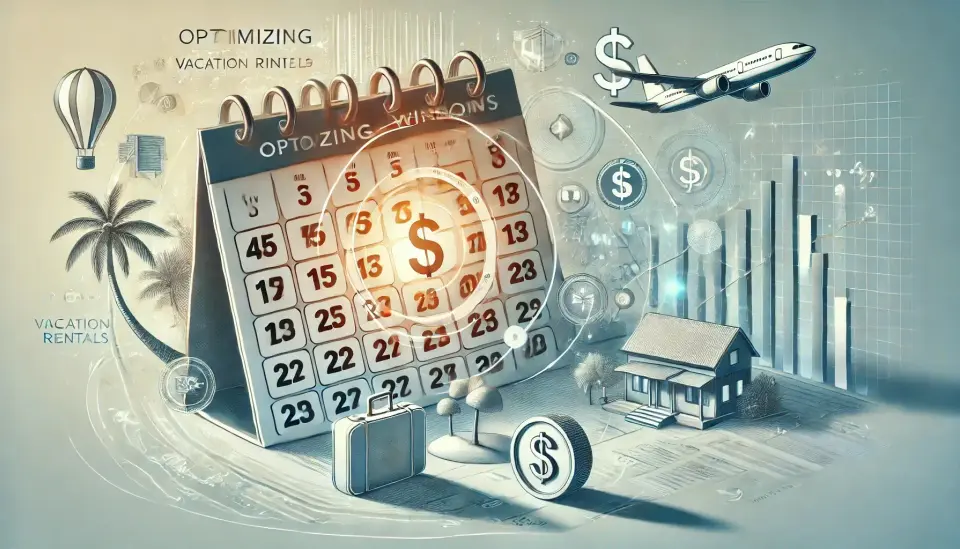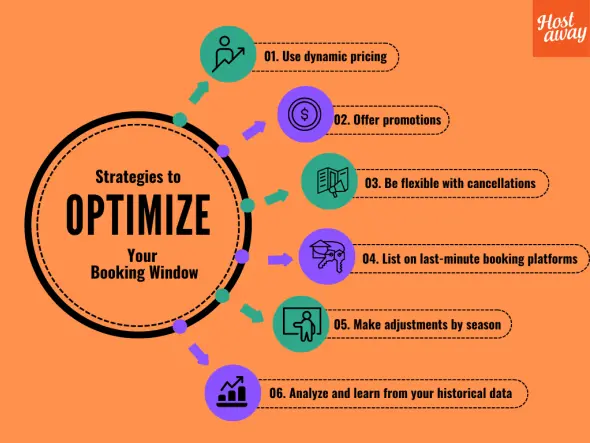What is a Booking Window? How to Optimize Booking Lead Time

Maximizing the revenue of your vacation rental property hinges on understanding and leveraging key metrics to drive profitability. One such vital metric is the booking window or booking lead time.
In this article we dive into what a booking window is, how it impacts revenue and how you can master your vacation rental’s booking lead times for different seasons to maximize pricing.
What is a Booking Window?
Also known as booking lead time, the booking window is the span of time between when a guest books a stay and the actual check-in date. It can also refer to the time span that a property manager makes the short-term rental property available for reservations. For example, a vacation rental host may allow guests to book their property in the peak summer month of August from January of the same year, creating a booking window of seven months.
Why is the Booking Window Important? How Does it Affect Revenue?
Understanding and optimizing your booking window is vital for revenue management.
A shorter booking window often means a vacation rental host must be more agile in adjusting pricing and availability to capture last-minute bookings. On the other hand, a longer booking window allows for more strategic planning, such as implementing early-bird discounts or creating packages that incentivize advance bookings.
Property managers who monitor their booking windows can identify trends and adjust their strategies accordingly. For instance, if you notice a trend of last-minute bookings, you might choose to increase your marketing efforts or offer discounts closer to the check-in date to ensure your property doesn't sit vacant. Alternatively, if you observe that your guests tend to book well in advance, you could consider raising prices slightly during the early booking phase to maximize revenue.
What are the Factors that Affect Booking Lead Time?
Your booking window can vary depending on several factors.
Season
Booking lead times often fluctuate depending on the time of the year. For example, guests tend to book in advance for travel during peak seasons and book closer to the dates during the off season of a destination.
Location & property type
The type of vacation rental property and its location impacts its booking windows. For instance, an apartment in a city that caters to business travelers is likely to see shorter booking windows due to more last-minute trips.
Guest type
Different segments of travelers exhibit different booking behaviors. For example, families are more likely to book far ahead whereas a couple is more likely to book a spontaneous holiday at the last minute.
Unexpected events
Unforeseen events like a pandemic, civil unrest or a volcanic eruption that disrupts travel can shrink booking lead times due to the uncertainty of being able to travel. Conversely, in times of stability, guests might book further in advance, providing hosts with a longer lead time to fill their calendars.

6 Strategies to Optimize Booking Lead Time
1. Dynamic pricing
By automatically adjusting your rates based on demand, supply, seasonality and booking trends, a dynamic pricing tool can help you attract bookings at the right time. For example, offering discounts for early bookings can encourage guests to reserve your property sooner, thereby lengthening your booking lead time.
2. Promotions
Offering special rates or added incentives for guests who book well in advance can be an effective way to secure early reservations. These early-bird promotions can be marketed as limited-time offers, creating a sense of urgency that prompts potential guests to book earlier.
Conversely, if you find that your booking window is typically short, consider offering last-minute deals to fill gaps in your calendar. These deals can attract spontaneous travelers looking for a good bargain, helping you avoid vacant dates and maximize occupancy.
3. Flexible cancellation policies
Offering more flexible cancellation policies can also encourage earlier bookings. Guests are often hesitant to book far in advance due to the fear of unexpected changes in their plans. By providing the option to cancel or reschedule without significant penalties, you can give guests the confidence to book earlier.
4. Optimizing marketing efforts
Tailoring your marketing efforts to your typical booking lead time can make a significant difference. For example, if your property tends to attract last-minute bookings, list on channels like Whimstay and GetawayGoGo that cater to more spontaneous travelers.
5. Seasonal adjustments
Booking windows vary by season, lengthening for peak seasons and shortening for low seasons. You can get guests to book further in advance during the off-season by offering attractive promotions.
6. Analyzing historical data
Regularly reviewing your booking data can reveal patterns that help you optimize your lead times. By analyzing past booking windows, you can identify trends and adjust your strategies to better align with guest behavior, ultimately leading to more consistent bookings, higher pricing and higher revenue.
The Power and Potential of the Booking Window
The booking window is a critical metric for vacation rental property managers, directly influencing occupancy and revenue. By understanding and optimizing your booking lead time, you can implement strategies that provide the best rates, encourage earlier bookings, attract last-minute travelers and ultimately maximize your rental income.